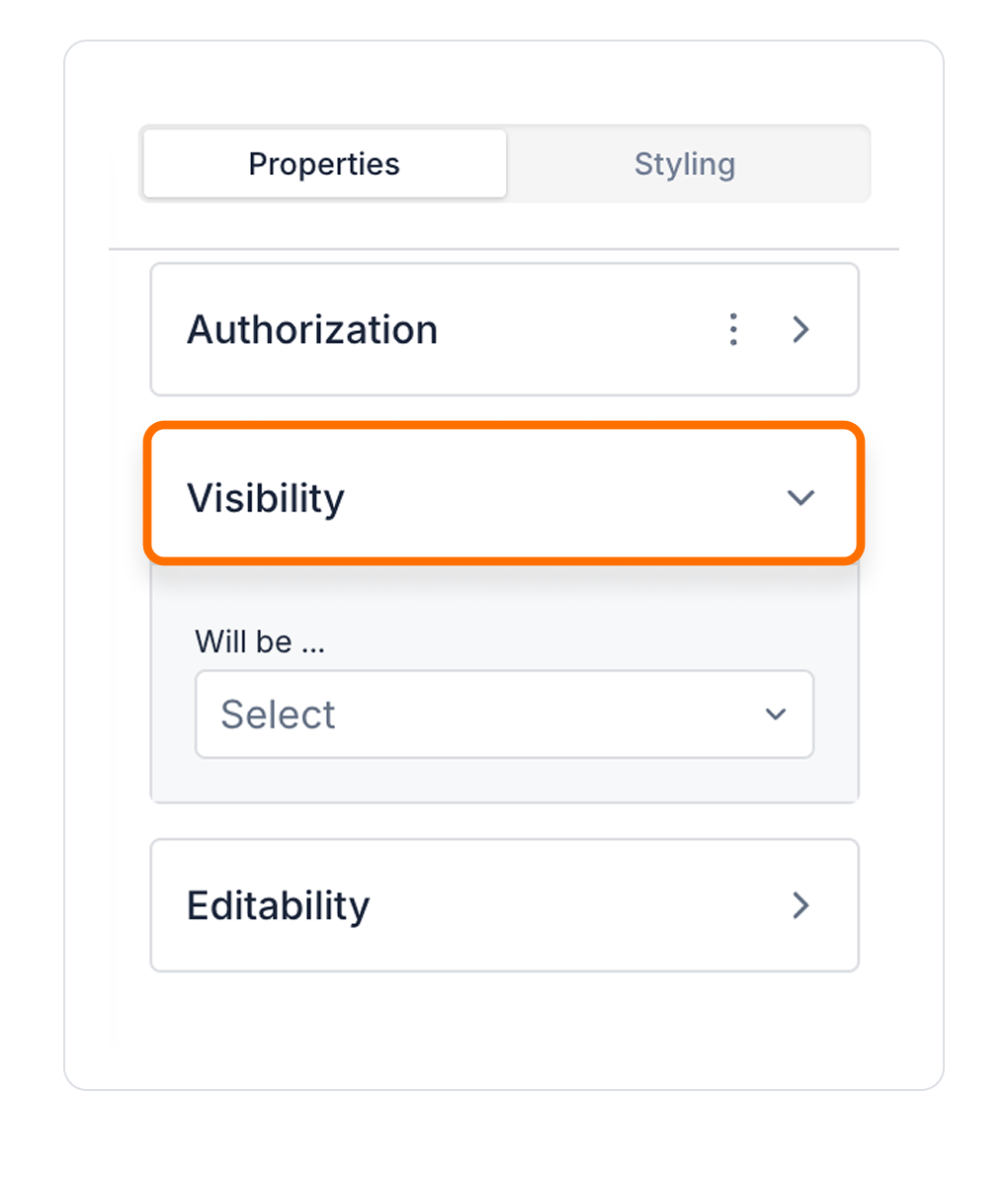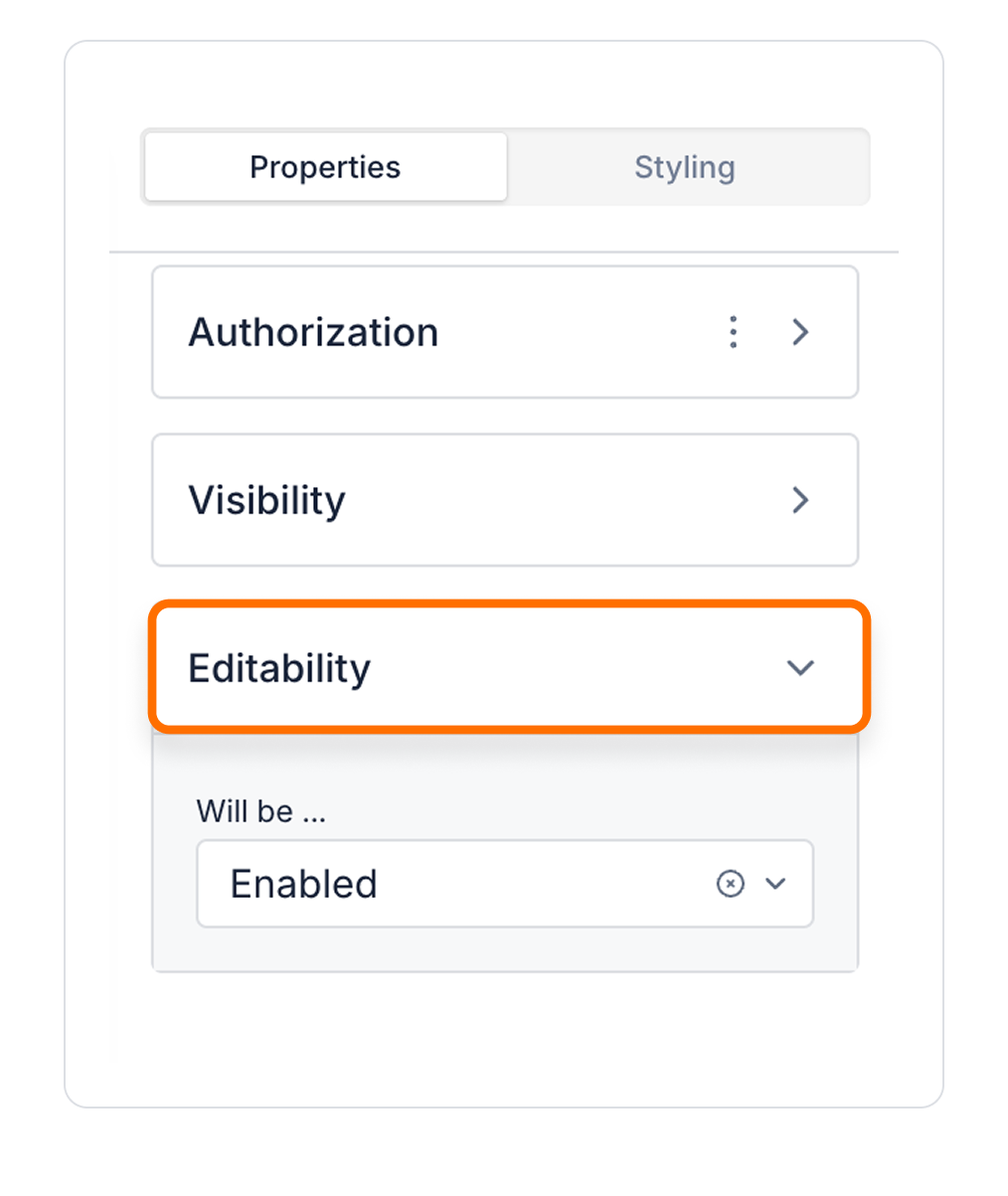

Kuika's Carousel element allows users to view images or content in a loop. Users can switch between content by swiping or using arrow buttons. The Carousel element is ideal for product launches, image galleries or for displaying a variety of content. In this tutorial, you will learn how to structure your content using the Carousel element and how to customize the visual arrangements.
This training content consists of the following topics:

You can configure the following settings in the Properties panel:

Authorization

To manage access control at the element level, you can use the Authorization section in the Properties panel.
Access Types
Anonymous
Allows all users to view the element without logging in.
Restricted
Restricts access to only verified users or specific roles.
Unauthorized Behavior (Hide / Disable)
If the user does not have the required role, you can specify how the element should behave in the Choose field:
This setting is used to manage how unauthorized users encounter the element.
Visibility

To configure the setting:


By customizing your elements with the Styling Panel, you can create impressive interfaces for your web and mobile applications. In this section, you can configure the following settings:
By following these steps, you can configure the Area Chart element to suit your needs.